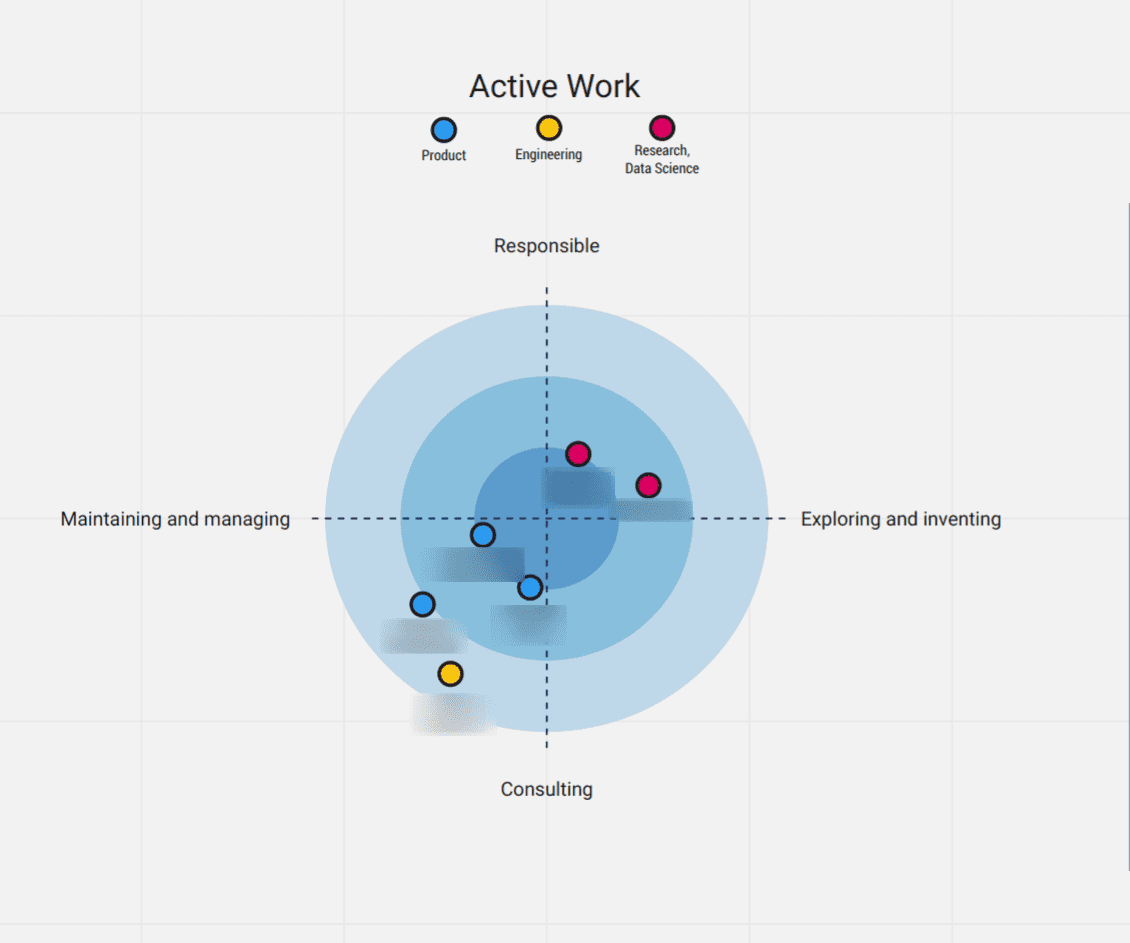Maintaining a Product Manager Project Portfolio
As a product manager, I need a way to keep track of my various projects and investments. More importantly, I want to maintain the proper blend of projects for exploring new ideas and exploiting existing ones. I will show you a simple tool I'm using to keep track.
I arrived at the product management track in an interesting way. I've been a software engineer for last 10 years or so. Most of that was in startups or small organizations — places where it is important to work in a cross-functional way. In that time, I realized the cross-functional work and customer research I was doing as an engineer typically described what product managers did. So I pursued that further.
I committed to learning more about product management as a formal role and I've been learning ever since. Because of my background, I'm currently working as a "technical project manager" — a role that blends my experience with technology and digital solutions with my passion for working with customers.
I spend a lot of time exploring unvetted technologies and identifying intersections between product and innovation. I also spend time paired with other product managers and engineering teams to consult and provide ideas for managing our existing prducts.
Organizations and individuals alike have an ideal balance of exploring new opportunities and exploiting existing investments. Regardless of your path to product management, you probably have a few balance points for that mix as well:
- a mix balancing the needs of the organization at the current time
- a mix describing your ideals for growth and learning
- a mix distributing the right talent to the right problems
I like to think of this mix as a product manager's project portfolio. It's a helpful tool to show you where you are spending your time with respect to your goals. It is a way to assess with your manager or leadership if your time is allocated in harmony with the needs of the business.
What I like the most is it quickly visualizes if you or the organization is over-indexing in one area at the expense of another. I think this matters for the health of your team as much as it does for the health of your career. A visualization helps you have that conversation.
So here is how I think about mine. I strike 2 axes along which I can think about any given project or investment of my time:
- Maintaining/Managing vs. Exploring/Inventing
- Responsible vs. Consulting
For the first axis, I'm describing whether something I'm doing helps push the company into new areas. This is work that usually looks like research and design, rapid prototyping, customer interviews, and so on. But most important, I'm not iterating on anything existing at the company. The other end of the axis describes activities where I may be innovating in an existing product, or working with a team to solve a problem within the product.
The other axis describes my relationship to the work. I like the responsibility assignment matrix — commonly known as RACI — to describe anybody's relationship to a piece of work. In my current role, I'm either leading the charge on something or I'm pairing with another product manager to navigate technical aspects of the problem. I simplify it as projects where I'm consulting rather than directly responsible for the outcome. I have more capacity for the former than the latter, so it helps me see where I'm overloaded or underutilized.
Plotting these 2 axes in a visualization gives me 4 quadrants. This describes my project portfolio mix. I use the distance from the centroid of the graph to indicate how actively a project is consuming my time. Projects that only need 1-5 hours of my attention per week are farther away. I prioritize my attention for active projects and move them toward the middle.
In my visualization, you may notice I have different color circles to represent the projects. This may not apply to you, but my role is a blend of disciplines. In some projects, I act more as a technical consult — sometimes writing code if necessary — but I want these to be a relatively smaller allocation in my portfolio. In some other projects, I am working with an engineer or data scientist to evaluate a new capability or data source to determine its value to customers. These are speculative and nascent, so I mark them as "research/data science". The last chunk of work is where I am working as a product manager.
There is a separate space in my visualization where I track potential projects. I can anticipate what kind of portfolio mix I want to build as I complete projects and the needs of the company change.
I made my project portfolio using a tool called Miro. I can share this with my manager to discuss in our 1:1s. I can also share it with my team and anyone is welcome to leave comments or ask questions. If you use Miro, look for the "what's on your radar" template.
This is a helpful communication tool to help people understand how I'm spending my time in accordance with strategic needs. I hope you will find some value for yourself as well.
